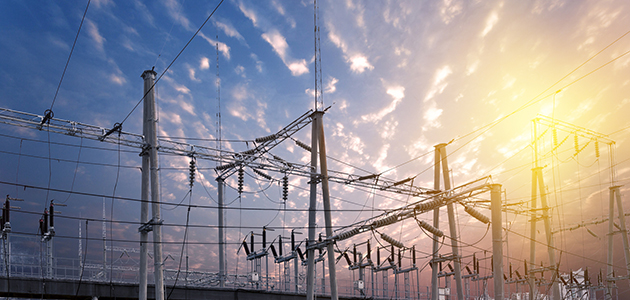When Shifting Generation Needs Require a ‘Non-Wires Alternative’
Back to Top
There’s a new concept gaining momentum among various state public utility commissions (PUCs) aimed at keeping costs down when needs arise for reliability and capacity upgrades within a utility’s service area.
Historically, when a utility identified the need to upgrade or improve its grid, there was only one type of alternative: wired solutions. These wired solutions run the gamut from running more wires (conductors), upgrading the conductor sizes (reconductoring), adding a new substation, expanding a substation, or installing a feeder tie, to name just a few of the options available to a utility in the past.
These traditional solutions also range from affordable to multimillion-dollar upgrade projects. Let me give you an example: A relatively simple way to improve reliability is to “tie” two feeders together, giving each feeder a redundant source of electricity that can be “tied in” when the primary source is lost. This relatively simple engineering solution requires running a feeder line to connect the end of one radial feeder to the end of another radial feeder.
This can be very expensive the farther you travel down the feeder. Here’s why: Imagine the feeders as “spokes on a bicycle wheel.” The farther you travel from the hub toward the tire, the farther apart the two spokes become. If the utility connects the two feeder “spokes” at the outer edge to maximize the benefit to their customers, the feeder tie cabling is potentially very long. There’s a fact that is immutable in the utility world–long equals expensive.
Another means to provide that same reliability gain might be to build a new substation. But that, too, requires more wires and more high-voltage equipment. When we do the analysis, almost everything a utility traditionally evaluated to improve reliability or create capacity on its system is called a “wired alternative.” Until recently…
The proliferation of distributed energy resources (DERs) is making the grid much more complex. There are still plenty of essentially “hub-and-spoke” distribution systems. Our history of centralized generation drove that methodology. DERs are changing our traditional ideas of grid configuration. Power sources are not necessarily located only in the middle of the wheel anymore. In some cases, centralized generation might not be powering the wheel at all. Everything is moving to the spokes, to the grid edge.
In fact, centralized generation is being decommissioned at an amazing pace. Since the year 2000, roughly 3,300 generating units totaling roughly 115 GW of capacity have been retired across the United States. The trend extends to coal plants, nuclear plants, and even some natural gas plants. The load isn’t really changing, but the generation mix is. We still need nearly the same generation capacity to support our grid “wheels,” but it’s being added at the grid edges in the form of solar farms, wind, on-site natural gas, energy storage, or combinations of these. EIA forecasts confirm renewables will be the fastest growing form of generation.
Here’s the point of this discussion: This change is a good thing. It’s expanding the range of solutions available to solve reliability and capacity issues for utilities. I hope you’re asking, “How?”
Let’s revisit our example above. Instead of a feeder tie solution to improve reliability and resilience, a utility could install an appropriate DER at the end of the first feeder. In the event of a loss of upstream power on the first feeder (the one with the concerns), the DER is engaged to power the feeder from the opposite end. To put it graphically, instead of power flowing from the hub along the spoke (normal configuration), it flows from the end of the spoke toward the hub (new direction). Because there are essentially no new wires being run in this scenario, it’s called a “non-wires alternative,” or NWA for short.
Let’s look at this difference in strategy from a financial perspective. On the wired side, it could cost the utility $15 million to run a long feeder tie. Under the NWA stratagem, an energy storage system owned by a utility to perform a similar service could cost $10 million to install. If that same energy storage system is contracted to the utility under a power purchase agreement constituting “reliability-as-a-service” or “microgrid as a service,” there may be no capital cost to the utility. The payment is based on a rate for service based on use and/or availability.
It may seem like I favor one solution over another; I don’t. No one can say one option is better than another without getting into the details. Every situation is significantly different and requires case-by-case considerations. It’s yet another example of how the transformation of the grid is expanding the type of analysis utilities need to consider before executing capital programs.
PUCs across the country are seeing the growing potential for non-wires alternatives to provide energy to consumers faster and better, and to provide cheaper solutions to traditional grid problems. They also are increasingly requesting utilities conduct analyses of NWA options in their planning. Massachusetts, Connecticut, and New York are among the states with high-profile examples of this trend, but I see more every month.
I’d be interested in learning whether your PUC is requesting your utility to consider non-wires alternatives to help reduce capital outlays when changing power needs arise in your service area.